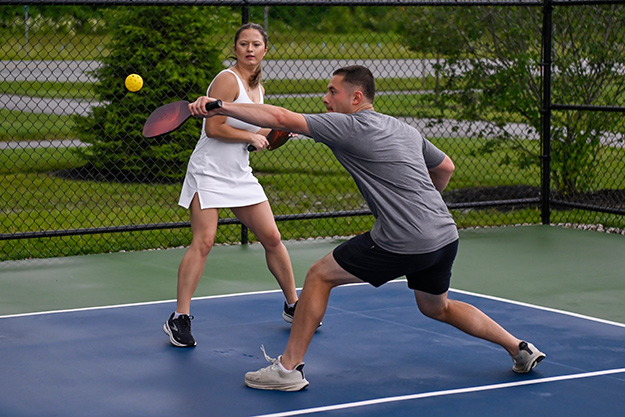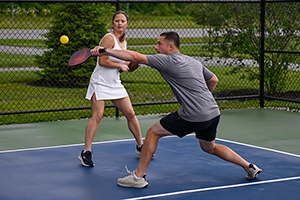
Pickleball’s popularity has exploded in recent years, and tennis remains a favorite for many athletes. But with the excitement comes a familiar downside, i.e., elbow pain. While many people assume it’s always “tennis elbow,” the reality is that racquet sports can cause a range of elbow conditions. Here’s how racquet sports can lead to different types of elbow injuries, each requiring its own approach to diagnosis, treatment, and prevention.
Not All Elbow Pain Is Tennis Elbow
Tennis elbow, or lateral epicondylitis, involves inflammation of the tendons on the outside of the elbow, typically from repetitive gripping and wrist extension. However, players can also develop:
- Golfer’s elbow (medial epicondylitis): Pain on the inside of the elbow from repetitive wrist flexion.
- Elbow ligament sprains or partial tears: Often from sudden twisting or awkward strokes.
- Olecranon bursitis: Swelling at the tip of the elbow due to impact or overuse.
- Radial tunnel syndrome: Nerve compression causing pain and weakness in the forearm.
Each condition has unique symptoms and requires tailored management.
Why Racquet Sports Increase Risk
Tennis and pickleball demand repeated, high-speed arm movements. Serving, backhand strokes, and quick volleys generate strain through the elbow’s tendons, ligaments, and surrounding muscles. Pickleball in particular, with its lighter paddle and fast exchanges, often leads to shorter recovery periods between hits, compounding stress on the joint.
Early Signs You Shouldn’t Ignore
Elbow discomfort that persists beyond a few days of rest should be evaluated. Warning signs include:
- Sharp or aching pain during grip or swing
- Weakness in the forearm or hand
- Stiffness after play or in the morning
- Numbness or tingling extending into the fingers
Ignoring these symptoms can lead to chronic conditions that are harder to treat.
Treatment Options Beyond Rest
While rest and ice can help mild cases, persistent or severe elbow symptoms often require more specialized care. Treatment may include:
- Targeted therapy to restore strength and flexibility.
- Activity modifications to adjust technique and reduce strain.
- Bracing or taping to support the affected structures during play.
- Injections for inflammation and tendon healing.
- Surgical options for cases that do not respond to conservative treatment.
Prevention Strategies for Players
To protect your elbows, consider:
- Warming up with dynamic stretches
- Using proper grip size and equipment
- Strengthening forearm and shoulder muscles
- Gradually increasing play intensity and frequency
Good mechanics and conditioning are key to avoiding repetitive stress injuries.
If elbow pain is affecting your performance in tennis or pickleball, don’t wait for it to become a chronic issue. Book an appointment with The Hand, Wrist & Elbow Institute at Midwest Orthopaedics at Rush to receive a thorough evaluation and a personalized treatment plan that supports your return to the court.

